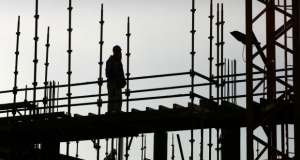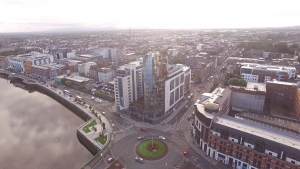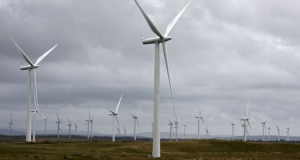Overseas workers ‘don’t trust’ construction sector, builder says
Mr Drumm said money does not tend to be a problem when negotiating with potential recruits, but that concerns remain over the health of the sector following decades of boom-bust cycles.
Construction Industry Federation director general Tom Parlon said the lobby group had written to the Government seeking a relaxation of rules surrounding work permits.
October sees highest ever month of job announcements in Limerick
Irish firms are flying high in the US
“We’ve found the US to be a welcoming market for Irish business. There are a growing number of successful Irish-owned businesses thriving in the US and a strong networking community that is incredibly supportive.
“Irish businesses can find in America ready access to capital, inexpensive and plentiful energy, and vast natural resources. They also can benefit from a skilled, energised, and optimistic workforce and there are some 320 million potential consumers for products and services. Increased connectivity including new direct flights to Dallas and Minneapolis means that it’s easier than ever for Irish companies to invest and grow their businesses in the United States.”
Construction Industry Continues to Battle with Skills Shortages
Facebook reaffirms commitment to Ireland
Facebook has announced that it is expanding its investment in Ireland by acquiring a long-term lease of 14 acres for a new campus development in the heart of Ballsbridge in Dublin 4; the premises known as the Bank Centre currently occupied by AIB. The move will see Facebook quadruple its current floorspace to 870,000 square foot across a number of buildings with capacity for an additional 5,000 employees. Last year, marking its ninth year in the Ireland, Facebook opened its third office, the Samuel Beckett Building in East Point and announced that it would create hundreds of new jobs. By the end of 2018, there will be over 4,000 people working for Facebook in Ireland, across its four locations – Facebook’s International Headquarters in Grand Canal Square, Samuel Beckett Building in Dublin 3, Clonee Data Centre in Meath and Facebook Reality Labs in Cork.
Ireland is critically important to Facebook and plays a central role in its global operations as home to over 60 teams including engineers, safety experts, legal professionals, policy experts, marketing and sales teams covering many facets of the social network. A number of global and regional teams are run out of Ireland including the global gaming team, and the team that helps small, medium sized business across Europe, Middle East and Africa (EMEA) connect with customers. The infrastructure engineering for EMEA is also based in Ireland, this team oversees infrastructure operations across Europe, Middle East and Africa ensuring Facebook’s data centres and networks continue to run and give people around the world the power to build community and connect with friends and family.
Gareth Lambe, Head of Facebook Ireland said: “Ireland is one of the best places in the world to be a technology company and we’re investing here for the long term. By the end of the year we’ll employ more than 4,000 people across four sites in Ireland working on our family of apps including Facebook, Instagram, Whats App and Oculus. This significant investment in a 14-acre campus with capacity for thousands more employees demonstrates our commitment to Ireland, our desire to grow our business here and continue to contribute to the economy.”
Minister for Business, Enterprise and Innovation, Heather Humphreys commented, “The acquisition of this new campus is a landmark day for Facebook, which established its International HQ in Dublin in December 2008 and has expanded significantly in Ireland over the last 3-4 years. Without a doubt, this expansion is a huge vote of confidence in Ireland and our pro-enterprise policies. Above all, it is a testament to the calibre of our rich pool of talent, who have contributed so positively to the company’s global growth in the last decade.”
Facebook’s Clonee Data Centre also recently launched it’s Community Action Grant programme in Meath to support community projects related to culture or technology. The programme is inviting applications that address community needs by putting the power of technology to use for community benefit, improving local STEM education or connecting people on or offline. Interested applicants can apply on the Clonee Data Center Facebook Page.
https://www.irishbuildingmagazine.ie/2018/11/08/facebook-reaffirms-its-commitment-to-ireland/
EirGrid ensuring Ireland leading the way in renewable electricity
But that is not the only problem. The other problem is resilience. Most people are blissfully unaware of the fact that there are actually two components to the power generated by conventional electricity stations. The first is the electrical energy we are familiar with, the second is known as the reactive component. In very crude terms, this is the bit that drives it through the wires of the transmission network.
EirGrid has responded by developing a novel and efficient trial process for renewable energy suppliers to qualify to supply services to the grid. The qualification trials process ran for six months in 2017 and focused on three key areas – the provision of reserve capacity which is available instantly should renewable or other sources drop out, the provision of what is known as ramping power which can be called up in a matter of hours, and services which address the reactive power issue.









